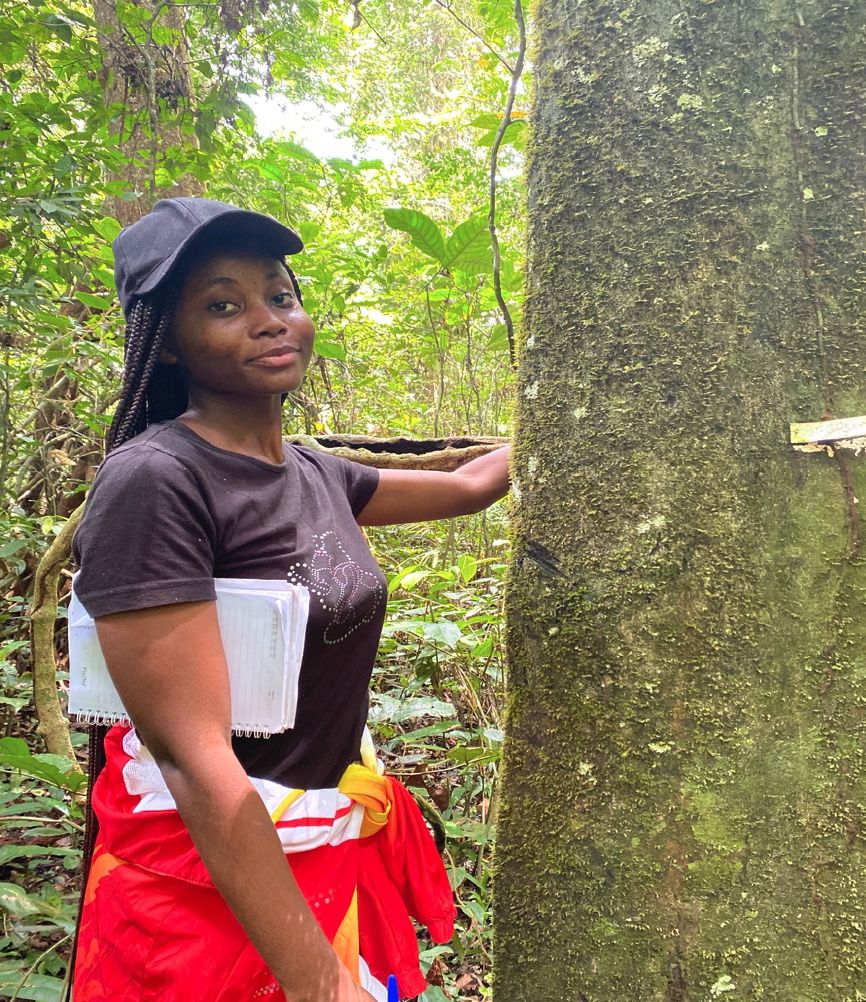After earning a Bachelor’s in Agroforestry in 2022 at the Higher Institute of Environmental Sciences, she embarked on a Master’s program specializing in climate change. As a full member of Global Environment Protects, she has led fieldwork initiatives, including the sea turtle winter marine conservation program and research on the contribution of rubber-based agroforestry systems to carbon sequestration in Cameroon’s south region.
Previous studies integrating LCLUC have proven that the perception and engagement of local communities in reforestation activities can be a solution to forest restoration and endangered species conservation like Diospyros crassiflora. However, conjunction of slow growth rate and Ebony market demand, related to forest conversion gave rise to sustainability issues, with many species being harvested to near extinction. Better understanding the role of local communities in conservation efforts might contribute to species conservation. This study aims to improve the implication of local communities in reforestation activities, hence contribute to degraded forest restoration using community-based agroforestry tree domestication models with Diospyros crassiflora in the Eastern Cameroon. This project will be carried out in collaboration with the Ebony project and combine: forest and farm inventories, satellite image download, GPS coordinates collection, data processing and analysis on QGIS software; carbon calculations as well as community surveys. This will allow to map LCLUC related to reforestation activities using remote sensing data (1), estimate and map above-ground carbon sequestration (2), conduct community surveys to evaluate the role and engagement of local communities in reforestation activities (3). The project’s outcomes will contribute to unveil the work of local communities on ecosystem conservation combined with tree domestication.
